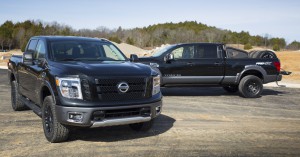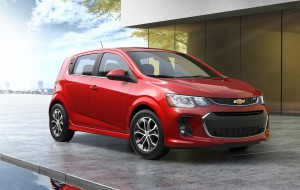
Trucks are still paving the way for strong sales in the U.S. these days. March is expected to see a significant jump in new vehicle sales.
Even with concerns about rising interest rates and downward pressure on used car prices, making leases more expensive, auto makers are expected to post a sales increase for March, analysts said.
The auto industry will see its first year-over-year monthly increase of 2017 as March retail sales are expected to rise 2.4%, according to a forecast developed jointly by J.D. Power and LMC Automotive. Total sales are expected to increase 1.6%. J.D. Power and Kelley Blue Book expected that the seasonally adjusted rate of annual sales will reach 17.3 million units to 17.4 million.
However, the sales increase will come at a price as incentives were running at a record level of $3,768 per unit, the highest level since the recession of 2009. Incentives as a percentage of manufacturers suggested retail prices reached 10.4% in March, which is also the highest level since 2009 when the topped 11% of MSRP, Power noted.
With the boost in incentives and the surging popularity of trucks and crossovers, U.S. new-vehicle retail sales in March are expected to reach 1,620,300 units, a 1.6% increase. March will be only the second month in the last 13 in which the retail market has grown by more than 2%, Power said.
“The sales growth in March will enable 2017 to move slightly ahead of 2016 on a year-to-date basis,” said Deirdre Borrego, senior vice president of automotive data and analytics at J.D. Power.
“However, the competitiveness of the industry continues to be evident in ever-rising incentive levels. Incentives will reach a new high for the month of March and will exceed the 10%-of-MSRP threshold for the ninth consecutive month.”
(Ally raises caution flag about 2017 auto sales. Click Here for the story.)
KBB noted the 1.63 million units in March brings the industry’s the first quarter total comes in at 4.1 million units, up 0.3% year-over-year. This would be the second highest first quarter on record, surpassed in the first quarter of 2000. It would be the highest March sales total since 2000, when sales hit 1.66 million total units.
“Kelley Blue Book expects manufacturers to report mostly positive sales numbers this month, capping a steady first quarter with an average SAAR of 17.4 million,” said Tim Fleming, analyst for Kelley Blue Book.
“Despite considerably higher discounts and incentives, first quarter sales totals will likely only finish flat versus last year, a signal of weakening consumer demand for new vehicles. As sales cool after years of robust growth, adjusting production accordingly and managing supply, especially in car segments, should be top priorities for automakers,” Fleming said
KBB also noted in its report that after a record year of sales in 2016 and seven consecutive year-over-year sales increases, Kelley Blue Book’s forecast for 2017 calls for sales in the range of 16.8 million to 17.3 million units, this represents a 1 to 4% decrease from last year.
(Click Here for details about car buyers getting longer loans.)
Jeff Schuster of LMC, however, said car industry sales remain very stable.
“As the first quarter comes to a close, light-vehicle demand in the United States remains stable and is expected to average 17.4 million units year-to-date,” he said.
President Donald Trump’s policy direction is taking center stage as potential positive and negative drivers of auto sales during the next 18 months, Schuster cautioned.
“A border tax could have massive negative implications with more than 2 million units of new-vehicle demand at risk if imported vehicles and parts are taxed at 20%. Such a tax would increase the average price of all vehicles by 11% and could set off a trade war pulling the country into a recession,” he said.
(Leasing levels surge, raise concern. Click Here to see why.)
Despite the policy uncertainty, LMC is maintaining its forecast of total light-vehicle sales in 2017 at 17.6 million units, an increase of 0.2% from 2016. The forecast for retail light-vehicle sales is now expected to round up to 14.2 million units from 14.1 million units in 2016, Schuster said.

